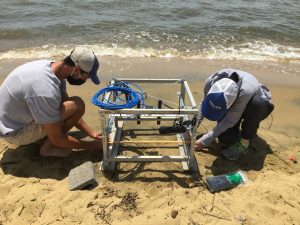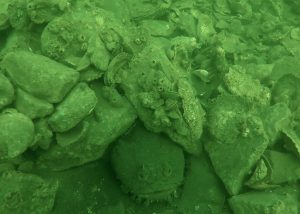
Monitoring benefits Chesapeake Bay recovery efforts by helping the public, scientists, and decision-makers understand the benefits that oyster restoration provides to the ecosystem and the economy. For example, monitoring efforts have revealed that oyster reefs extract more harmful excess nutrients daily than unrestored bottom, and that mature reefs in one bay tributary would yield a 160 percent increase to the blue crab harvest.
ORP is contributing to the development of a variety of tools to conduct oyster habitat monitoring. This includes underwater video, sidescan sonar mapping, and sampling oysters using a variety of gear types.
Monitoring is a critical component of the restoration process that takes place before and after a reef is built.
PRE-RESTORATION MONITORING

ORP conducts habitat surveys, also known as ground truthing, before restoration begins to identify areas of the Bay that can support oyster settlement, growth, and survival. We collect information about the presence of pre-existing oyster reefs and the quality of habitat they provide. For example: Are reefs buried by sediment? Are there enough shells to provide habitat for oyster spat? Is the bottom too muddy for oysters to grow? Ground truthing data is also collected by our partners through the use of remote sensing, such as seafloor mapping using sonar.
Pre-restoration monitoring data is used to develop a restoration blueprint that describes where restoration will happen in each tributary and what type of restoration is needed.
POST-RESTORATION MONITORING
ORP monitors reefs after restoration is complete to assess whether restoration goals were met and determine whether restoration led to an enhancement of the oyster population. We collect data such as the number, size, density, and condition of remaining oysters. These data are then used by restoration partners to inform decisions about how to best manage the reefs and ensure their long-term health, and to guide future restoration efforts.
Post-restoration monitoring data are compiled in an annual report. So far, our restoration efforts have been a resounding success! View the most recent report here. So far, our restoration efforts have been a resounding success - the vast majority of reefs have met the restoration success criteria.




